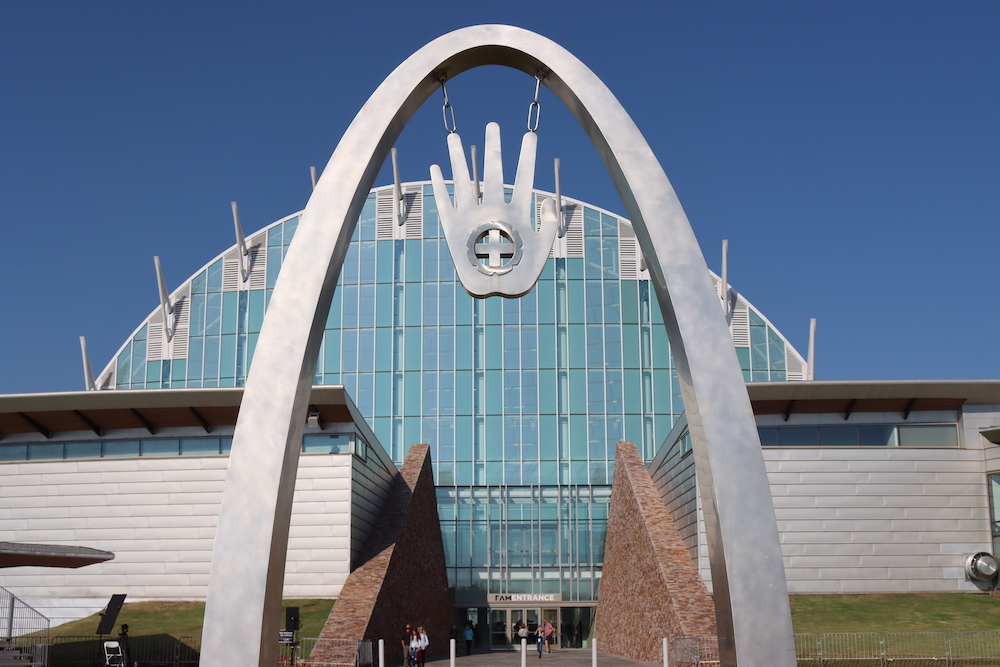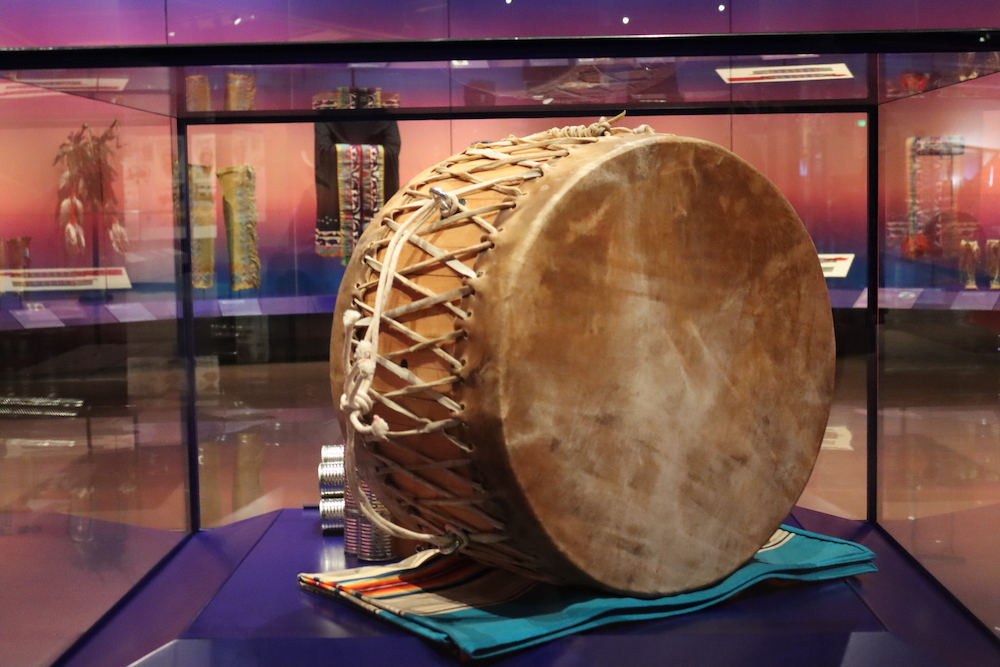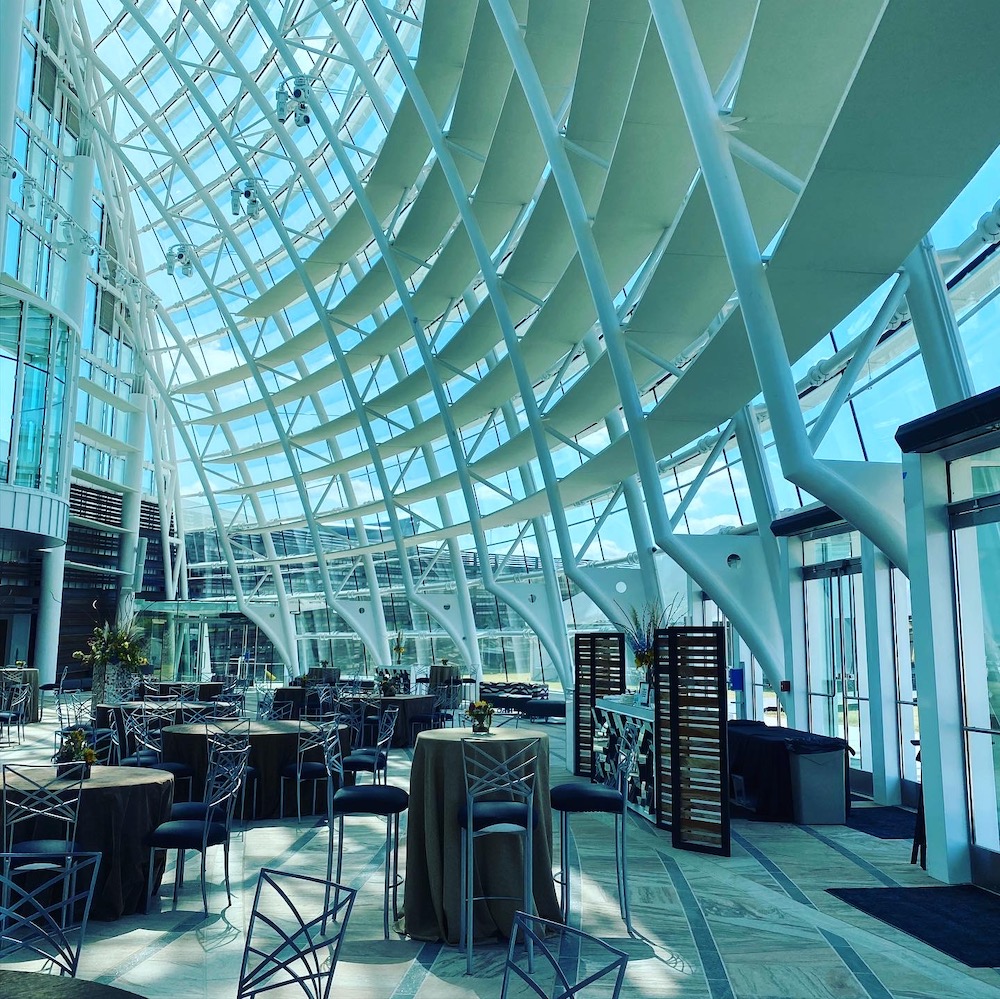
- Details
- By Darren Thompson
Oklahoma City, Okla.—Nearly three decades in the making, the First Americans Museum finally opens it doors this weekend, kicking off a busy weekend of activities with a procession featuring delegates from each of the 39 Tribal Nations in the state of Oklahoma.
The tribal procession begins Saturday at 10:30 a.m., with formal recognitions to follow by Governor of the Chickasaw Nation Bill Anoatubby, Mayor of Oklahoma City David Holt (Osage), United States Poet Laureate Joy Harjo (Muscogee) and other museum leaders.
Want more Native News? Get the free daily newsletter today.
“On Sept. 18, 2021, the First Americans Museum is set to welcome its first guests to its cultural storytelling experience steeped in history and heritage,” the First American Museum wrote in a statement. “FAM has worked with tribal volunteers and community partners to create a unique and culturally rich experience.”
Performances, demonstrations, and other activities throughout the museum campus include interactive art activities, field games, youth poetry, dance performances, tribal demonstrations, fashion shows, cooking demonstrations, storytelling teepees, and live music. Two buildings make up the First Americans Museum campus: the 175,000-square foot museum and the 4,000-square foot FAM Center, which will serve as an educational resource center.

The museum cost $175 million to construct, with funds coming from public and private sources. The concept was first pitched in 1994 by Oklahomans for Indian Opportunity, an organization that represented 28 tribes in the state. The tribes wanted to develop a cultural center along the Oklahoma River near where Interstate 35 and Interstate 40 connect. Stakeholders selected the site along the Oklahoma River in September 1998.
Building the museum took the better part of two decades to complete, with stops and starts along the way. Construction began in 2006, but stopped in 2012 when funding for the project ran out and the state of Oklahoma decided to stop paying for the project after a reported $90 million had already been spent on the project. The museum and cultural center sat half-finished until 2019, when the city and the Chickasaw Nation struck a deal.
Because of rising infections of the Covid-19 delta variant, the opening is capped at 7,000 with no more than 3,500 admitted each day of the weekend.
Internationally known architecture firm Johnson Fain, based in Los Angeles, worked in collaboration with Hornbeek Blatt, a local firm with offices in Edmond, Oklahoma.
The museum and culture center showcases state-of-the-art exhibitions in First American history, culture and art, will host live public and educational programs, provides a full-service restaurant and an express café offering unique Native-inspired cuisine, and a museum store featuring exclusive items created by premiere First American artists that can only be found at FAM.

One of the exhibits has items from each of the state’s 39 tribes from the Smithsonian’s National Museum of the American Indian. All of the items on display from the Smithsonian were welcomed and prayed for by all of their descendants, as it was the first time the items have been among their relatives and in Oklahoma in more than 100 years.
“We are thrilled to share with the public a premier venue dedicated to the history, art and cultural lifeways of First Americans in Oklahoma,” James Pepper Henry, FAM director and CEO said in a statement. “Those who attend the Grand Opening will be among the first to experience a national treasure that will be enjoyed for decades to come.”
Due to expected large crowds, opening weekend tickets must be purchased in advance. Tickets are $5 per person, per day and can be purchased online at www.famok.org.
More Stories Like This
Native News Weekly (August 25, 2024): D.C. BriefsUS Presidents in Their Own Words Concerning American Indians
Oral History Project Announces 14th Stop in Portland, Oregon: NABS Continues to Gather Crucial Stories Across Indian Country
US House Votes to Reopen the Federal Government; Bill Goes to Trump's Desk for Signature
NTIA Plans Tribal Broadband Program Reforms to Boost Connectivity, Cut Red Tape
Help us tell the stories that could save Native languages and food traditions
At a critical moment for Indian Country, Native News Online is embarking on our most ambitious reporting project yet: "Cultivating Culture," a three-year investigation into two forces shaping Native community survival—food sovereignty and language revitalization.
The devastating impact of COVID-19 accelerated the loss of Native elders and with them, irreplaceable cultural knowledge. Yet across tribal communities, innovative leaders are fighting back, reclaiming traditional food systems and breathing new life into Native languages. These aren't just cultural preservation efforts—they're powerful pathways to community health, healing, and resilience.
Our dedicated reporting team will spend three years documenting these stories through on-the-ground reporting in 18 tribal communities, producing over 200 in-depth stories, 18 podcast episodes, and multimedia content that amplifies Indigenous voices. We'll show policymakers, funders, and allies how cultural restoration directly impacts physical and mental wellness while celebrating successful models of sovereignty and self-determination.
This isn't corporate media parachuting into Indian Country for a quick story. This is sustained, relationship-based journalism by Native reporters who understand these communities. It's "Warrior Journalism"—fearless reporting that serves the 5.5 million readers who depend on us for news that mainstream media often ignores.
We need your help right now. While we've secured partial funding, we're still $450,000 short of our three-year budget. Our immediate goal is $25,000 this month to keep this critical work moving forward—funding reporter salaries, travel to remote communities, photography, and the deep reporting these stories deserve.
Every dollar directly supports Indigenous journalists telling Indigenous stories. Whether it's $5 or $50, your contribution ensures these vital narratives of resilience, innovation, and hope don't disappear into silence.
 The stakes couldn't be higher. Native languages are being lost at an alarming rate. Food insecurity plagues many tribal communities. But solutions are emerging, and these stories need to be told.
The stakes couldn't be higher. Native languages are being lost at an alarming rate. Food insecurity plagues many tribal communities. But solutions are emerging, and these stories need to be told.
Support independent Native journalism. Fund the stories that matter.
Levi Rickert (Potawatomi), Editor & Publisher
